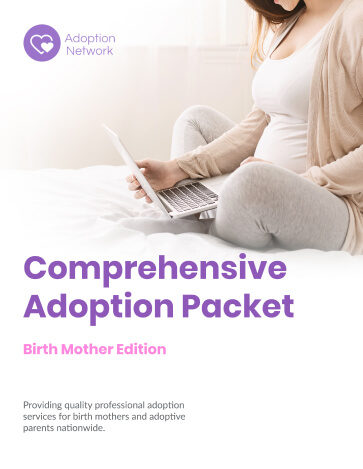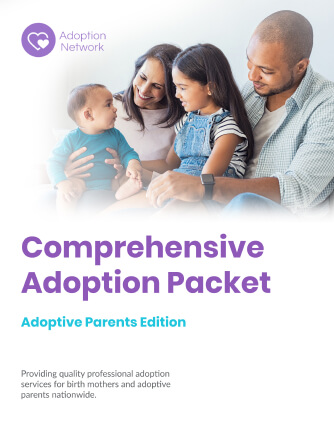
Legal Update: U.S. Supreme Court Overturns Roe v. Wade
On June 24, 2022, the U.S. Supreme Court ended the constitutional right to abortion in the case, Dobbs v. Jackson Women’s Health Organization. This case had to do with the last abortion clinic in Mississippi. The state of Mississippi had a law that banned abortions after 15 weeks of pregnancy. In this court decision, the U.S. Supreme Court overturned Roe v. Wade, the case from 1973 that said women have a constitutional right to abortion. The U.S. Supreme Court also overturned the case, Casey v. Planned Parenthood, which said that women have a right to seek an abortion before the “viability of a fetus” (which means when the fetus can live outside of the uterus, commonly understood as around 24 weeks). This Dobbs decision gives each state the ability to make their own laws about abortion.
Every state is different and will have different laws about abortion. New abortion bans have taken effect (trigger bans), and decades-old abortion laws might now become enforceable. The result: rapidly changing, overwhelming and confusing limitations on women’s choices of what they can do, when and where, with their bodies and their pregnancies.
How Adoption Network Legal Center Can Help
If you are pregnant or know a woman with an unplanned pregnancy, we urge you to seek information, education, assistance, and support. And seek it sooner, not later. Whether it’s placing your baby up for adoption, raising your unplanned child or an abortion, your best action is to educate and inform yourself. Become aware and explore ALL your options including the risks.
Adoption may be an option that you’ve considered or haven’t considered until now. For education and information, please see our website, www.adoptionnetwork.com. We offer help like financial and emotional support for birth mothers.
If you feel that you don’t have support from family, friends, or your community, seek support elsewhere. Reach out. The support you want and need is available.
For more information about the Supreme Court, new abortion trigger bans and other abortion laws and restrictions, please read on.
Who is on the U.S. Supreme Court?
The U.S. Supreme Court is made up of nine appointed justices (judges). When one of the justices dies, retires, or is impeached, a new justice is nominated by the current President of the United States and the U.S. Senate confirms the nominee with a simple majority vote. The President will select a someone who aligns with their and their supporters’ values, beliefs, and opinions to be vetted by Congress through the advise and consent process.
The current members of the U. S. Supreme Court are:
-Chief Justice John Roberts, born 1955, appointed by George W. Bush in 2005.
-Justice Clarence Thomas, born 1948, appointed by George H. W. Bush in 1991, the second African American to serve on the Court.
-Justice Samuel Alito, born 1950, appointed by George W. Bush in 2006.
-Justice Sonia Sotomayor, born 1954, appointed by Barack Obama in 2009, third woman, first woman of color, first Latina to serve on the Court.
-Justice Elena Kagan, born 1960, appointed by Barak Obama in 2010, fourth woman to serve on the Court.
-Justice Neil Gorsuch, born 1967, appointed by Donald Trump in 2017.
-Justice Brett Kavanaugh, born 1965, appointed by Donald Trump in 2018.
-Justice Amy Coney Barrett, born 1972, appointed by Donald Trump in 2020, fifth woman to serve on the Court.
-Justice Ketanji Brown Jackson, born 1970, appointed by Joe Biden in 2022, first African American woman to serve on the Court. (replacing Justice Stephen Breyer, appointed by Bill Clinton)
In Dobbs v. Jackson Women’s Health Organization, Justice Samuel Alito wrote the majority opinion with Justices Clarence Thomas, Neil Gorsuch, Brett Kavanaugh and Amy Coney Barrett joining. Chief Justice John Roberts concurred (agreed) but would have limited the decision to the Mississippi law they were deciding on only and did not agree with overturning Roe v. Wade. Dissenting (disagreeing) were Justices Stephen Breyer, Sonia Sotomayor, and Elena Kagan. The vote was 6 to 3 on the Mississippi law and 5 to 4 on the overturning of Roe v. Wade.
The impact of the reversal of Roe v. Wade extends beyond the woman who wants and cannot obtain an abortion. The emotional and mental impact could extend to the unwanted child, family, friends, fathers, and the community.
This Dobbs decision to reverse Roe v. Wade presents numerous legal questions and future lawsuits around people’s rights to privacy, free practice of religion, equal protection and the separation of church and state.
As part of the Judicial branch of our government, the job of these nine justices on the U.S. Supreme Court is to interpret the laws created by our legislature, laws on other important issues such as gun control, voting rights, immigration, and environmental emissions control. Since the justices serve for life, their decisions have lasting, multi-generational repercussions on our country.
13 States with Trigger Bans to Abortion
A trigger ban is a law written to take effect immediately (or within a short time) if Roe v. Wade is overturned. Some of these trigger bans have no exceptions for rape, incest, or to save the life of the pregnant woman. Once these trigger ban laws go into effect, they replace other laws such as previous bans based on the number of weeks of pregnancy.
The following states currently have trigger bans: Arkansas, Idaho, Kentucky, Louisiana, Mississippi, Missouri, North Dakota, Oklahoma, South Dakota, Tennessee, Texas, Utah, and Wyoming.
The language and details of each state’s trigger bans are different. Women’s access to abortion changed overnight with clinics cancelling their appointments the day the Dobbs ruling came down. Lawsuits have been filed to stop enforcement of the trigger bans. For example, on June 30, 2022, a New Orleans judge issued a temporary restraining order, allowing abortion clinics to temporarily offer abortions again. There are many legal battles going on and the availability of abortion is changing daily in this recent aftermath.
Decades-Old Abortion Bans are Resurrected
Several states, such as Mississippi, North Carolina, Wisconsin, Arizona, and Michigan, have decades-old abortion bans on their books.
Wisconsin’s law from 1849 bans abortion, even in cases of rape or incest, and provides an exception if it’s “medically deemed to save a woman’s life.” What this means is not clear. This puts many doctors in Wisconsin and other medical professionals in a difficult position. Now as they provide medical care to their patients, they also have to think about protecting themselves from felony criminal liability (up to 6 years in prison or $10,000). Although Wisconsin’s Attorney General Josh Kaul has filed a challenge to the 1849 law and said he won’t enforce the state’s ban, some clinics have suspended their abortion services the day the Dobbs decision came down anyway.
Michigan’s law from 1931 makes an abortion a criminal felony with a penalty up to 4 years in prison. Criminal liability can extend to doctors who assist. Similarly, it bans abortions in cases of rape and incest and provides an exception “to preserve the life of the mother.” Governor Gretchen Whitmer is working on blocking that law. Attorney General Dana Nessel says she will not enforce the 1931 law, but elected county prosecutors can bring such cases.
In short, whether officials in these states can or will enforce these old laws is not clear.
In Some Cases, Women Have as Little as 2 Weeks to Decide and Obtain an Abortion
Previously, courts have blocked many of these laws that banned abortion after 6 or 8 weeks of pregnancy such as those in Georgia, Ohio, Tennessee, Texas, and Idaho. Now those laws may take effect immediately.
Typically, the start of pregnancy is measured from the first day of a woman’s last menstrual cycle. For example, if the first day of your last period is June 1 and your cycle last 28 days, ovulation generally occurs on day 14 (in this case, June 14). And if you become pregnant on June 14, you might be able to know you’re pregnant in the last week of June, week 4. This means that a pregnant woman who finds out she is pregnant at week 4 has only 2 weeks (approximately mid-July) to decide and obtain an abortion. Many women won’t know they are pregnant until after 6 weeks. In those states, they no longer have a choice to have an abortion.
What About State Constitutional Rights?
States have their own constitutions also. And often the state constitutions offer more rights than the U.S. Constitution. Although there are no state constitutions that explicitly include a right to abortion, many state constitutions have rights to life, liberty, and the pursuit of happiness as well as a rights to privacy.
State constitutions are generally easier to change than the federal Constitution. Once a state legislature proposes an amendment, most states require only a simple majority to approve it.
Recent lawsuits have been filed in Utah, Kentucky, Idaho, and Mississippi challenging state courts to find a right to abortion. The decisions are to be determined.
In 2014, Tennessee was the first state in the country to amend their constitution to expressly declare no right to abortion. Alabama, West Virginia, and Louisiana have followed Tennessee’s lead.
In 2019, the state’s Supreme Court in Kansas found a right to abortion in the state’s constitution’s “life, liberty and the pursuit of happiness” clause. That means that abortion is legal in Kansas today. That could change in August 2022, when Kansas voters consider such an amendment to their state constitution. In November, Kentucky voters will consider a state constitutional amendment.
Colorado, District of Columbia, New Jersey, and Oregon have codified the right to abortion throughout pregnancy. This November 2022 Vermont voters will vote on a state constitutional amendment guaranteeing “personal reproductive autonomy” and California and Michigan voters will vote to add abortion to their state constitutional rights.
What Options Do Women Have Now with Unwanted Pregnancy in Restrictive States?
Some states are trying to expand access to abortion to prepare for more patients traveling interstate. The governors of California, Washington, and Oregon (sanctuary states) are calling their states “safe havens” for all those seeking abortions and other reproductive health care services. These governors said they’ll protect women who cross their state borders for reproductive healthcare. They said they won’t help out-of-state investigators targeting women who seek these services.
The harsh reality is that many pregnant women will find themselves in a position where their time has run out and abortion is no longer an option in their state. Some of these women will not be able to travel to another state where that option remains because they can’t financially afford it, can’t take time off work, or can’t find alternate childcare for their children if necessary.
Some women may end up giving birth and raising their child, maybe on their own, without adequate financial, mental, and emotional resources. Some women may end up dropping off their baby at a hospital using “safe haven” laws, available in all 50 states, to protect themselves from criminal prosecution. But if they did this, they wouldn’t be involved the decision of where the baby will go and who will raise them, as they would be if they choose adoption instead.
All these situations and decisions are difficult and may involve extreme grief and loss. Please educate and inform yourself of ALL your options. For information about adoption, please see our website, www.adoptionnetwork.com. We offer help such as financial and emotional support for birth mothers.
If you feel that you do not have support from your family, friends, or your community, seek support elsewhere. Reach out. The support you want and need is available.
By Diem K. Nguyen
Diem K. Nguyen is an Attorney at Law licensed in California, owner of her own law practice, Simple CA Divorce, in Orange County, California, a freelance writer, and mother of two children.


Search Adoption Network
Speak with a Specialist 1-800-367-2367
